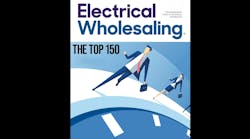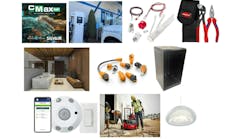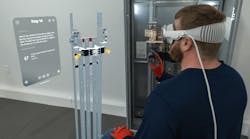In last month's article, we suggested that you micromanage your fast-moving products by ensuring that your forecasts for these products are accurate and that you carefully monitor the “safety stock” or reserved inventory maintained for each of these items. Unfortunately, economic conditions remain uncertain and many companies and organizations have determined they must further cut inventory in order to remain profitable or even survive. This month we will look at two additional suggestions for reducing your inventory while maintaining a high level of customer service: re-evaluating your reorder quantities and re-evaluating your forecasting of future demand of products.
Re-evaluating your order quantities
The economic order quantity (EOQ) is the quantity of a product that will minimize your total cost of inventory per piece. It balances the three costs you incur as you buy and maintain the stock of a product in your warehouse:
-
The cost of the material (plus freight and other costs associated directly with a particular replenishment shipment)
-
The cost of carrying inventory
-
The cost of issuing a replenishment order and processing the stock receipt
There are many versions of the EOQ formula. All of them are designed to maximize your organization's profitability. However, in today's economy we see many companies emphasizing “cash flow management” over profitability. They are willing to sacrifice some profit dollars in order to invest smaller amounts in inventory. If you find yourself in this situation, closely examine the EOQ quantities calculated by your computer system in terms of the day's supply of inventory it represents:
[EOQ ÷ (monthly forecast ÷ 30)]
The monthly forecast is divided by 30 to calculate an approximate forecast per day. For example:
EOQ = 60
Monthly forecast = 45
[60 ÷ (45 ÷ 30)]
[60 ÷ 1.5/day] = 40 day supply
A monthly forecast of 45 pieces is about 1.5 pieces per day. The EOQ of 60 represents a 40-day supply. Compare the results to the value of the product sold or used during the order cycle for each supplier. The order cycle (also known as the review cycle) is the typical length of time between replenishment shipments being received from the vendor. For example you may receive shipments from the primary vendor for this line every 10 days. If you include this item on each order, you can order a 10-day supply (10 days × 1.5/Day = 15 pieces). Compare the value of the EOQ and order cycle replenishment quantities. This particular product costs $7.50 per piece:
EOQ Value = 60 × $7.50 = $450
Order Cycle Quantity Value = 10 × $7.50 = $75
This lower 10-day reorder quantity of this product results in buying $375 less inventory and would not affect either anticipated lead time usage or safety stock quantity. These are elements of the minimum or “order point” quantity that will ensure that you reorder the product at the “right” time in order to avoid a stock-out. Replacing the EOQ with the order cycle quantity for many items can substantially reduce the amount of money you have to invest in inventory.
Though you will not be buying to achieve the lowest total cost for each piece of the product and maximize your profitability, buying just enough to last during the order cycle will reduce necessary cash outlays and increase your inventory turnover (i.e., your opportunities to earn a profit from every dollar of your average inventory investment). This may be just the remedy for a company having cash-flow challenges. And because the elements of the minimum or order point are not affected, order cycle replenishment should not have a detrimental effect on customer service.
Re-evaluating how you forecast future demand
Many companies base forecasts for non-seasonal products on an average of past usage recorded over the past several months. In fact, one of the most popular formulas is the “rolling-average forecast” that averages the usage recorded over the previous several months. Six months usage is a typical value to use in a rolling average forecast. For example to forecast demand for January 2009, you would average the usage recorded from July 2008 through December 2008. In stable economic times this amount of history will tend to temper the effects of random fluctuations in usage. It will tend to discount unusually high and low usage. But many of our customers saw a dramatic decrease in business starting with the stock market collapse in October. And demand for many items has continued to decrease since then. Here is the usage history of a typical item:
A demand forecast that averages usage recorded over the previous six months would equal 71 pieces. This is an unrealistically high forecast considering the decrease in usage experienced over the previous three months. As a result, businesses may purchase more inventory than they can sell or use in a reasonable period of time. Money that could be used for other purposes is tied up in this unneeded stock.
Until the economy improves, consider using a forecast formula that considers a shorter period of time. Many of our clients are now starting the forecasting process by averaging usage over the previous two months. This would result in a forecast for January of 27 pieces [(34 + 20) ÷ 2]. But they do not stop there. They look at the usage of each item to see if there has been a continual increase or decrease in usage over the previous several months. If there has been an observable trend in usage they will apply the average percentage increase or decrease in usage over the previous three months to the results of the two month rolling average forecast. In our example there has been an average decrease of 38.5 percent ((35.8 + 41.1) ÷ 2) per month over the three-month period:
Applying the trend factor, the resulting forecast for January would be 16.6, or about 17 pieces. The result is a more accurate and realistic prediction of the current and future consumption of goods. This method will also react more quickly when the economy recovers and usage returns to pre-recession levels. And as with the previous order cycle discussion, safety stock quantities will provide protection against stock-outs in case demand for a product suddenly increases. Achieving effective inventory management is even more important in challenging economic times. As you examine every aspect of your business to be sure it is operating as efficiently as possible, don't forget to analyze your forecasting tools. If you can accurately estimate what you will sell or use, you can meet or exceed your customers' expectations of product availability, at the least possible cost.
Jon Schreibfeder is president of Effective Inventory Management, Inc., Denton, Texas, a firm dedicated to helping distributors and manufacturers get the most out of their investment in stock inventory. Over the past 28 years, Jon has helped over two thousand firms improve their productivity and profitability through better inventory management. He is the author of numerous articles and a series of books on effective inventory management, including the recently published Achieving Effective Inventory Management — Fourth Edition and the National Association of Wholesale Distributors' Guess Right — Best Practices in Demand Forecasting for Distributors. A featured speaker at seminars and conventions throughout North America, Latin America, Europe, Asia, and the Pacific Rim, Jon has been awarded the title “Subject Matter Expert” in inventory management by the American Productivity and Quality Center and is an advisor to Purdue University's Industrial Distribution Program. To learn more about inventory management contact Jon at (972) 304-3325 or e-mail him at [email protected].
sales staff
Publisher
DAVID MILLER
[email protected]
330 N. Wabash Ave., Ste. 2300 • Chicago, IL 60611
Phone: 312-840-8487 • Fax: 312-840-8469
National Sales Manager Southeast/Southwest
VINCENT SAPUTO
[email protected]
6151 Powers Ferry Rd., Ste. 200 • Atlanta, GA 30339
Phone: 770-618-0106 • Fax: 678-546-5776
Midwest U.S. & Eastern Canada
TOM MORROW
[email protected]
330 N. Wabash Ave., Ste. 2300 • Chicago, IL 60611
Phone: 312-840-8417 • Fax: 312-840-8470
Western U.S. & Western Canada
JAMES CARAHALIOS
[email protected]
5921 Crestbrook Drive • Morrison, CO 80465
Phone: 303-697-1701 • Fax: 303-697-1703
Northeast
DAVID SEVIN
[email protected]
24 Houghton St. • Barrington, RI 02806
Phone: 401-246-1903 • Fax: 913-514-7454
Europe
JULIAN MADDOCKS-BORN
[email protected]
ITSL Media • Ramsay House, Marchmont Farm, Link Road
Hemel, Hempstead, Herts HP2 6JH • United Kingdom
Phone: +44 1442 230033 • Fax: +44 1442 219898
Classified Sales Representative
DIANE MASON
[email protected]
9800 Metcalf Avenue • Overland Park, KS 66212
Phone: 877-763-2303 • Fax: 913-514-6736








